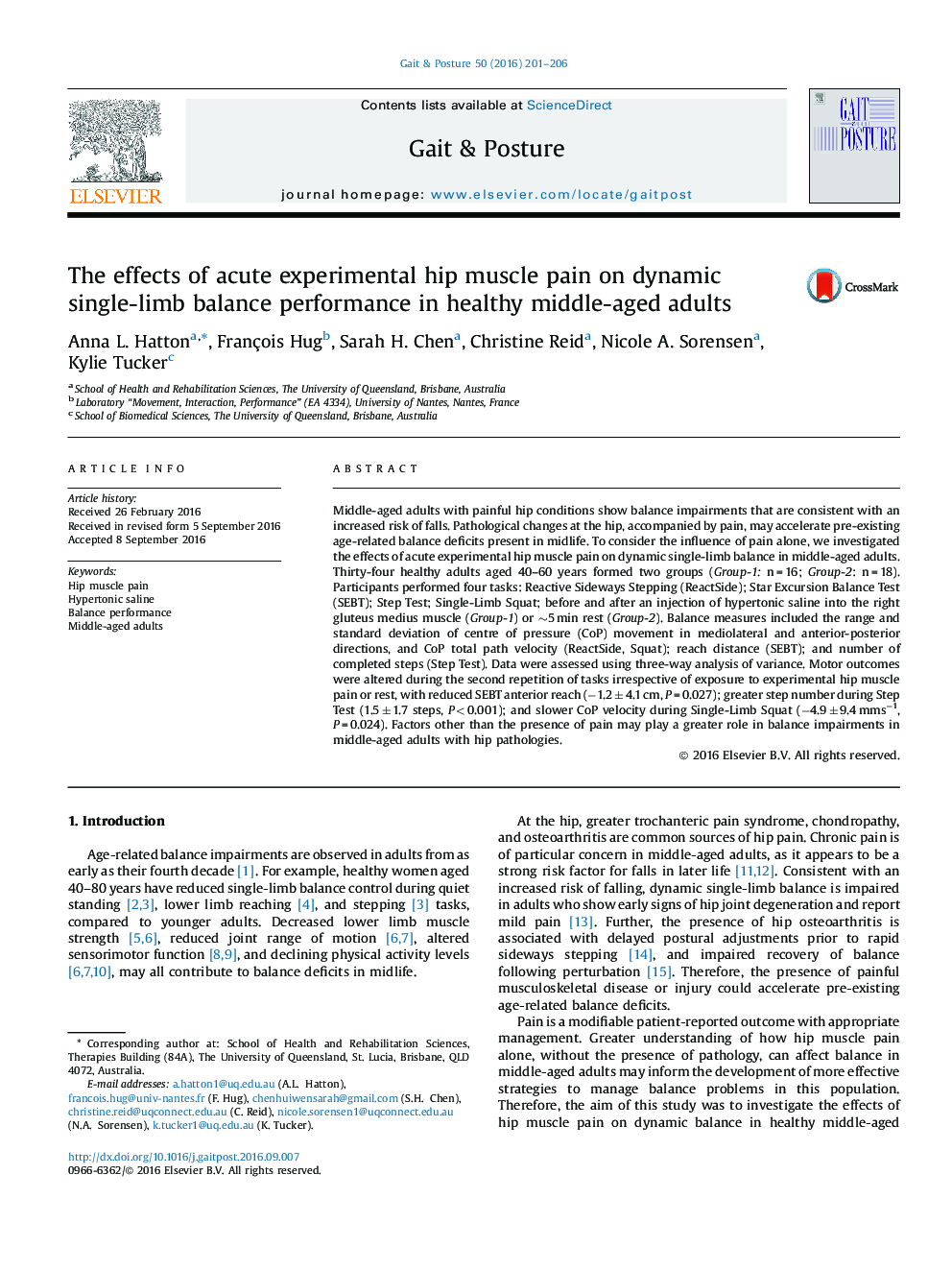| Article ID | Journal | Published Year | Pages | File Type |
|---|---|---|---|---|
| 6205339 | Gait & Posture | 2016 | 6 Pages |
â¢Acute hip muscle pain alone does not alter dynamic balance in middle-aged adults.â¢Balance performance is improved with task repetition irrespective of pain presence.â¢Factors other than pain may underpin poor balance in people with hip pathologies.
Middle-aged adults with painful hip conditions show balance impairments that are consistent with an increased risk of falls. Pathological changes at the hip, accompanied by pain, may accelerate pre-existing age-related balance deficits present in midlife. To consider the influence of pain alone, we investigated the effects of acute experimental hip muscle pain on dynamic single-limb balance in middle-aged adults. Thirty-four healthy adults aged 40-60 years formed two groups (Group-1: n = 16; Group-2: n = 18). Participants performed four tasks: Reactive Sideways Stepping (ReactSide); Star Excursion Balance Test (SEBT); Step Test; Single-Limb Squat; before and after an injection of hypertonic saline into the right gluteus medius muscle (Group-1) or â¼5 min rest (Group-2). Balance measures included the range and standard deviation of centre of pressure (CoP) movement in mediolateral and anterior-posterior directions, and CoP total path velocity (ReactSide, Squat); reach distance (SEBT); and number of completed steps (Step Test). Data were assessed using three-way analysis of variance. Motor outcomes were altered during the second repetition of tasks irrespective of exposure to experimental hip muscle pain or rest, with reduced SEBT anterior reach (â1.2 ± 4.1 cm, P = 0.027); greater step number during Step Test (1.5 ± 1.7 steps, P < 0.001); and slower CoP velocity during Single-Limb Squat (â4.9 ± 9.4 mmsâ1, P = 0.024). Factors other than the presence of pain may play a greater role in balance impairments in middle-aged adults with hip pathologies.
